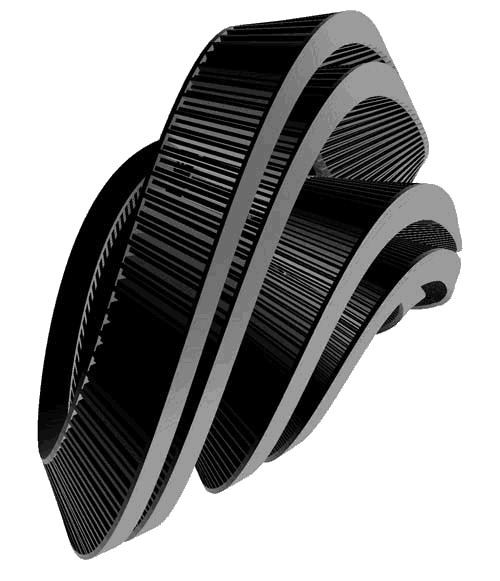|
|
FORMS/PHOTOS/MRI
_zur form uses three different media to present chaotic attractors, the numerical solutions of selected nonlinear differential equations: 3D forms (sculptures), photography, and a mixed reality installation with a tangible user interface (MRI). The various media included in _zur form address the distinct aspects of the forms' mathematical, historical, and artistic backgrounds.
The 3D forms are contemporary successors to the 19th-century tradition of mathematical models. The forms - chaotic attractors - can only be generated through iterative numerical approximations. In this sense, they are a typical product of the computer age. Although many of the chaotic attractors are three dimensional in structure, they have not as of yet been turned into tangible 3D objects. Yet, the topological structures of strange attractors are more likely to be readily grasped when they take the shape of real forms: a good example is a Möbius strip. By making the forms of chaotic attractors accessible as manipulable, real objects, we expect that their intriguing forms will be more easily understood by the general public.
The photographs in _zur form draw upon the tradition of mathematical functions as model objects for photography. They refer to the noticeable traces in the Fine Arts left by the mathematical forms of the 19th century. Trace, indexicality and the question of objectivity are central issues in photographic practice, and are interpellated in particularly interesting ways when the photographic model is of mathematical origin. Hence our motivation to take photographs of the negative forms of the chaotic attractor casts, which are by-products of the rapid prototyping production process.
The tangible part of the installation consists in a mixed reality interface (MRI). The ability to gain hands-on experience with the MRI encourages a wide variety of people to engage with virtual reality and to discover the relationship between formula and form. The MRI connects the sculptural / haptic aspect of the 3D forms with the dynamic realm of virtual reality. Since strange attractors are themselves the products of computer simulations, the interface shows the dynamic origins of the forms, while making them efficiently accessible at the same time as tangible virtual objects.
|
| info AT zurform.org |
top » |
|
|
